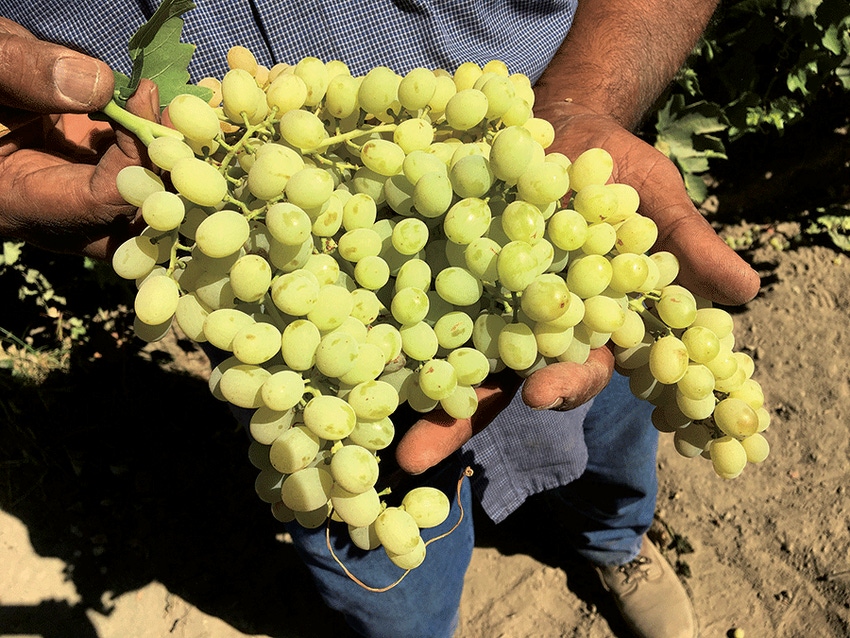
The raisin industry may not feel as much pain from the rising minimum wage as some other sectors because wages for farmworkers have already been trending above the minimum, a University of California-Davis agricultural economist says.
But “where we see more of an issue,” says Daniel Sumner, director of the Agricultural Issues Center at the university, “is with the tightening agricultural overtime rules, which are causing growers to make more on-farm adjustments.”
Legislation in 2016 by Assemblywoman Lorena Gonzalez, D-San Diego, that gradually reduces farmworkers’ overtime threshold to 8 hours a day and 40 hours a week on most farms by 2022, will be a problem for growers during harvests, Sumner says.
“My sense, from other low wage industries, is that people don’t pay a lot of overtime. They just employ people for 40 hours. Lots of low wage workers just end up working two jobs. It may well be that farmworkers may have to have two employers. In that sense, many people are a little frustrated with the overtime rules, because it’s not clear who it benefits if most workers aren’t getting overtime wages and have to go through the bother of having two separate employers.”
MACHINES VS. MANPOWER
Labor costs were a big factor as the Agricultural Issues Center recently released new cost studies for dry-on-the-vine raisin production using the open gable and overhead trellis systems. The AIC’s William Matthews and Donald Stewart discussed the findings during a grower workshop at Fresno earlier this year.
Among the findings was that total costs of non-machine labor on a hypothetical raisin farm in 2016 were $1,240 per acre — more than double the $586 per acre in 2003. To produce 5 tons an acre with hand labor cost $16.68 an hour in 2016, up from $11.02 an hour in 2003. California’s minimum wage in 2016 was $10 an hour.
Much has changed in the raisin industry since 2003. Total acreage harvested mechanically in 2016 was 45,903, up significantly from 31,483 acres mechanically harvested just three years earlier, according to the National Agricultural Statistics Service. In 2016, just over 29 percent of the state’s 157,410 acres of raisin-type grapes in 2016 was harvested mechanically.
While most raisins are still produced by sun drying after placing bunches on paper trays on terraces between vine rows, the overhead trellis system was used on 13,404 bearing acres in 2016, mostly in Fresno and Madera counties, according to NASS. The open gable system was present in only a few vineyards — about 0.5 percent of the acreage.
YIELD IS KEY
“We use as much labor per acre now as we did in 2003,” Sumner says. The difference is that it takes much less labor per unit of output now. There are more pruning costs with dry-on-the-vine systems. The big thing is yield.”
Bearing acreage of raisin grapes in California has steadily declined, from 273,047 in 1999 to 170,000 in 2016. Meanwhile, production has trended upward: growers delivered 362,039 packed tons of raisins to handlers in the 2015-16 crop year, up from 294,565 tons in 2012-13, according to the California Raisin Marketing Board.
Another change, Sumner says, has been that utilization of Thompson seedless grapes by the wine and table grape sectors has declined as those industries have developed specialty varieties. Now, more than 90 percent of Thompsons are used as raisins.
“If you look back 15 years ago, they were still crushing a substantial number of Thompsons,” he says. “They’re not doing that nearly as much any more, which means that the raisin industry and raisin grape growers don’t have the safety net they had before, if their grapes look lousy.”
SLOWING ACREAGE DECLINE
All in all, though, Sumner thinks the decline in acreage will slow, because “people are going to continue to consume raisins.” About 40 percent of the state’s raisins from the 2016-17 crop year were exported, and that figure has remained fairly consistent over the last 10 years, the AIC says.
A big help has been the free trade agreement between the U.S. and South Korea that took effect in 2012, offering immediate duty-free access to raisins and wine. It also gradually reduces duties on fresh grapes until they are duty-free beginning in 2028. The duties applied to raisins had been 21 percent.
“How are we doing on trade? Agriculture is doing great if Washington will just stay out of the way,” Sumner says, cautioning that higher U.S. tariffs on imported steel and aluminum could lead to retaliation that would hurt California growers.
“That is not a winner for California agriculture. Growers know that, and they’re trying to get that message to Washington as much as they can. I just hope people will keep listening.”
About the Author(s)
You May Also Like






